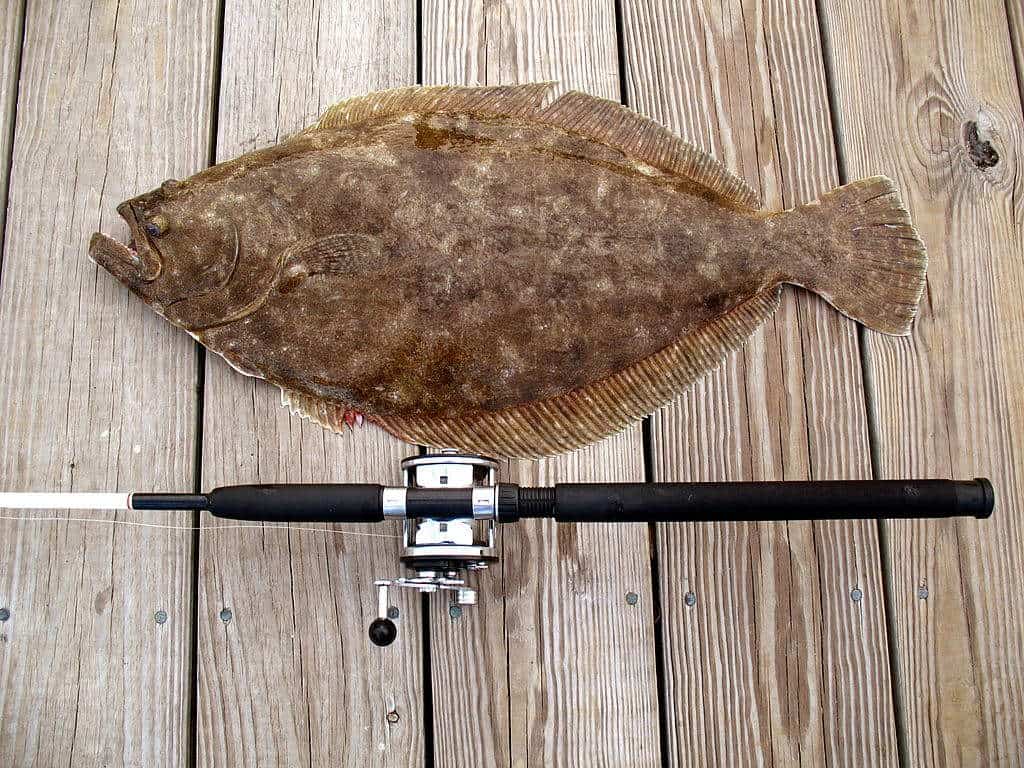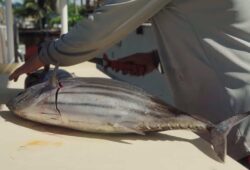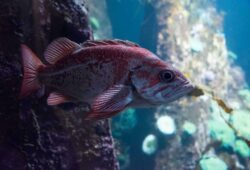Similar to catching a lot of other fish species like crappie or shrimp, catching flounder is quite exciting, especially when done at night! However, you may need different fishing techniques and specific gear for a successful trip.
So, what can you do to help strengthen your chances of getting a few flounders home? Read on as I show you helpful tips on how to catch flounder at night!
Contents
How to Catch Flounder At Night
Flounders are a flatfish that would hang around the seabeds, lying flat on one side and having eyes on its side that face up. They do seem quite harmless, but they aren’t your typical fish like what you see from The Little Mermaid!
These fish can blend in with their surroundings and change their pattern or color, hiding well. And if you catch a large one, prepare for quite a fight!
That’s why you shouldn’t go unprepared when catching flounder. Make sure to follow these tips if you go night fishing for them:
1. Where to Find Flounder
You can usually find flounder near passes and on beaches, though you can also find them inside bays, creeks, and rivers. Since the flounder population has grown throughout the years, you can also find them in total creeks or mouths of estuaries.
The key here is to look for flounders by finding sandy spots. You can find such within areas of grass, flats in bays and coastal waters, and the like, hanging out close to the shore. These will show you some flounder-friendly sandy homes.
However, their living areas change in the winter, as they migrate deep to the ocean in search of warmer temperatures. They won’t go back to shallow waters until spring emerges.
Once they migrate back to shallow waters in spring, they will stay on muddy and sandy water bottoms to hide better. Usually, they flock and hide in breaks from the current such as sandbars, reefs, rocks, docks, bridges, mouths of creeks, and the like. They may be tough to find at first, since they would change their colors to blend with where they are on, sitting flat on its bottom.
2. The Fishing Rod and Reel to Use
Most flounders won’t attempt battling you when you reel them in, though if they are bigger, just be prepared! But don’t worry, since usually, they are shy and would take small bites.
Because of their behavior, it’s best to use a sensitive fishing rod and reel setup that allows you to feel the slightest movements that indicate biting.
I recommend that you use a telescopic fishing rod, or if you have one already, a sensitive light-to-medium fishing rod. It needs to be about seven feet long and paired with a light to medium 10 to 12-lb fishing reel with it. This will prevent your line from snapping if you happen to get a larger flounder that wants to fight!
3. What Line, Tackle, and Rigs to Use
The fishing line you choose depends on the type and size of fish you plan to catch. Flounders come in different sizes depending on the area you’re fishing in, so it’s best to ask local anglers to find out the typical sizes of flounder that live in the waters you plan to visit.
For larger flounders, you can make do with a 14 to 20-lb fishing line, while smaller ones are best with 10 to 12-lb fishing lines.
As for the tackle, you can use circle hooks for flounder, matched with a sinker so your line can reach the bottom of the waters, where they usually are. But if you want even better results, then use flashy and reflective spinner rigs, which would attract flounders. I recommend you use gold-colored rigs!
4. The Right Bait or Lure
You can use either baits or lures when catching flounder. If you can, you should start with live baits such as minnows and/or finger mullets, as local flounders love to feast on these. Other baits include mummichogs, mud minnows, marine worms, or even live shrimp.
If you want to use artificial lures or bait, then find those that mimic movements similar to shrimp or fish, specifically shiny and two-toned baits and lures. Go for color combinations such as white, pink, and red rather than green and blue. This can catch eyes when in the dark waters, especially at night.
I suggest that you use a grub tailed jig that has a large, feather-like tail, which flounder will try to bite into!
5. Hook and Fight Flounder
If you plan to fish from a boat, then cast the line far up to the creek and allow the bait bounce and bump, moving back and forth with the current. Anchor your boat at mouths of rivers, creeks, or inlets.
If you go to the shore, aim for shallow and muddy waters, moving your line with the tide and having your bait move.
When you get a bite, slowly reel them in and you’ve got your catch! Measure and store your flounder properly (in a collapsible cool bag that’s paired with a big bottle of frozen water) to bring home.
You should prepare with a flashlight or strong light as you go around looking for a good area to fish for flounder. This ensures your safety and also makes it easier for you to find the best spot.
Read More: What Bait To Use For Sea Fishing – Our Expert Guide and Tips
Do you want to learn more about how to catch flounder better? Check out this helpful video for more tips:
Wrapping It Up
While flounders are a great fish to catch for novices and advanced anglers alike, you need to prepare ahead. This especially goes at night, when they are a bit easier to catch, particularly if you are gigging or spearfishing. If you go prepared, then you can enjoy catching a flounder or two successfully.
I hope that these tips on how to catch flounder at night helped you out. So if you plan to target flounder, use these tips for better chances of getting that bite!




